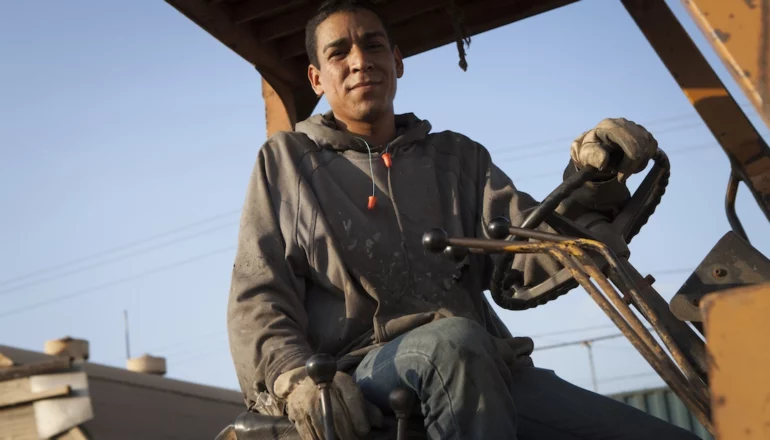1615 Mines Ave., Unit C Montebello Ca 90640
10 Best Practices for Moving Heavy Machinery Safely

As machinery movers in Los Angeles, we have observed that moving heavy machinery can be a challenging and dangerous task if not done correctly. If the equipment is usually bulky and heavy, then it often requires disassembly and reassembly to be transported.
We realize proper safety measures must be in place to ensure that the machinery is transported without any damage and without putting the workers and other people in the vicinity at risk. Precautions are necessary for small machinery movers as well.
In this article, we have mentioned some of the best practices adopted by us for moving heavy machinery safely. Any other machinery mover should also adhere to the following practices-
- Planning and Preparation
The first and most important step in moving heavy machinery is planning and preparation. The process of moving machinery should be well thought out and organized in advance to minimize any potential hazards and to ensure that everything goes smoothly. You should consider factors such as the size and weight of the machinery, the route of transportation, the equipment needed for the move, the number of workers required, and the estimated time it will take to complete the move.
- Risk Assessment
A risk assessment should be conducted to identify any potential hazards that may arise during the moving process. The assessment should consider the following factors:
- The weight and size of the machinery
- The route of transportation
- The equipment needed for the move
- The number of workers required
- The estimated time it will take to complete the move
- Equipment and Tools
Being one of the most reputable equipment movers in Los Angeles, we believe that having the right equipment and tools is crucial for a safe and successful machinery move. You will need equipment such as a forklift, cranes, dollies, pallet jacks, and slings to move heavy machinery. Additionally, you may also need specialized tools such as chains, straps, and other rigging equipment to secure the machinery during transit.
- Training and Qualifications
The workers involved in the moving process must be trained and qualified to operate the equipment and tools used in the move. The workers should be knowledgeable about the proper procedures for moving heavy machinery, the safety regulations that must be followed, and the procedures for handling emergencies.
- Safe Loading and Unloading
The loading and unloading of heavy machinery should be carried out with the utmost care and caution. The machinery should be secured to the vehicle with chains, straps, and other rigging equipment. The workers should also ensure that the machinery is balanced and centered on the vehicle to prevent it from shifting during transit.
- Transportation Route
The transportation route should be carefully planned to ensure that it is safe for heavy machinery to be transported. We check the route for avoiding obstacles such as low bridges, narrow roads, and sharp turns. If the machinery is too large to fit under a bridge, alternative routes should be considered.
- Communication
Effective communication is crucial when moving heavy machinery. The workers should be in constant communication with each other, especially during the loading and unloading process. The workers should also be equipped with radios or other communication devices to ensure that they can quickly and easily communicate with each other.
- Emergency Procedures
Emergency procedures must be in place in case of any accidents or incidents during the moving process. The workers should be trained in emergency procedures, including how to handle equipment failure, spills, and other potential hazards.
- Inspections and Maintenance
Regular inspections and maintenance of the equipment and tools used in the moving process are essential to ensure their safety and reliability. We ensure that our workers inspect the equipment and tools before and after each use to confirm that they are in good working order. If any equipment is found to be damaged or faulty, it should be removed from service and repaired or replaced.
- Safety Gear
The workers involved in the moving process should be equipped with the necessary personal protective equipment (PPE) to protect themselves from any potential hazards. The PPE should be authentic enough so that no worker is ever injured during the moving process.
Conclusion
So, if you are shifting or moving heavy machinery with the help of any professional machinery movers, then you must follow the above-mentioned tips for the safety of your machinery apart from the workers involved. Ask the service provider, whether they follow the necessary precautions or not. As one of the leading machinery movers in California, we ensure the complete safety of your machinery as well as our team members. Get in touch with us whenever you require the shifting of any heavy equipment.


Related Post
25
Dec
5 Cost Factors and Other Budgeting Tips for Heavy Equipment Hauling
When moving heavy equipment, it's very important to be cautious because these machines are like big babies that need safe...
25
Nov
7 Steps for Safe Heavy Machinery and Equipment Moving
Moving heavy machinery is a challenge many companies face, be it for relocation, expansion, or upgrading. This guide dives into...
25
Sep
Mastering the Art of Shipping Electrical and Plumbing Equipment
As fellow Californians, if you want to ship electrical and plumbing equipment, then this article will be informative for you!...